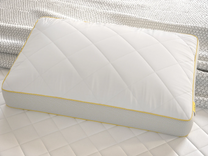Valentines’ day isn’t far away. But it’s worth noting that not every relationship is filled with chocolates and roses. In fact, some of us have some pretty tricky nightly tussles to tackle during the hours that are usually reserved for sleep.
Popular couple sleep issues include duvet hogging, snoring, sleep chronotype incompatibility and more. So, if you’re begrudging your other half in the bedroom, you’re not alone! But, we’re here to help…
sleeping with a snorer
Whenever couple sleep issues are discussed, snoring is without a doubt the most common complaint. If you know, you know! One minute you’re dreaming about something wonderful, and the next it’s like you’re in bed with a bulldozer!
One study carried out by the Mayo Clinic took a closer look at the sleep patterns of 10 married couples – each of which included one snorer and one non-snorer. This study revealed that once the snorer received treatment to reduce snoring, the amount of sleep their spouse was able to get increased by 13%. Simply put, the study calculated this to be equivalent to 62 minutes. That’s over an hour of extra rest and recovery time (1)!
If you’re losing sleep due to sharing a bed with a snorer, there are a couple of things you can both try.
snorer’s tips:
- Avoid drinking alcohol in the evenings (2) – unfortunately, those bedtime tipples will need to stop.
- Try sleeping on your side (3). Sleeping on your back is one of the most common snoring scenarios and training yourself to sleep on your side can alleviate symptoms massively.
- Elevate your head during the night (4). Try using an extra pillow to see if that helps.
non-snorer tips:
- Try wearing earplugs (5) – block out the noise of a snoring partner completely. Although, this isn’t always a practical option, especially for those with little ones!
- Trial using a white noise machine through the night (6) – mask the snoring with white noise!
Occasional snoring is usually only an inconvenience. But regular, heavy snoring episode could indicate that your other half is suffering from obstructive sleep apnoea. This is something that requires further investigation by a sleep specialist. Remember, sleep apnoea diagnoses are usually spotted by the non-snorer in a couple as snorers aren’t usually aware of their persistent snoring.
If your snoring partner is keeping you awake, try to encourage them to check in with their GP to assess the situation. This will benefit you both as you enjoy a better sleep quality moving forward.
sleeping with a duvet hogger
It’s the middle of the night and you suddenly wake up shivering, curled into the foetal position in a bid to preserve body heat. Sound familiar? Sounds like you’ve been sleeping with a duvet hogger!
The problem is real. And more couples than you know face a battle for the bedsheets on a nightly basis. So, what can we do?
tips for partners sharing a bed with a sheet stealer:
- Tuck yourself in (7) – either under your body or under the mattress should be enough to stave off duvet theft!
- Cuddle up to your partner – if you manage to maintain a cuddling position all night long, stealing the duvet will be nigh-on impossible.
- Invest in a bigger duvet – if there’s more covers to go around, it may solve the sheet stealing issue.
- Have a duvet each! This may sound excessive, but if a duvet hogger is depriving you of sleep, swapping your existing duvet for two single duvets could be the ideal solution.
- Consider twin single beds. Once you’ve exhausted all other options, it might be time to think about a sleep divorce. Don’t worry – while the connotations of such a thing seem negative, if it improves your sleep quality, it’ll have a positive impact on your relationship too.
sharing a bed with a hot sleeper
Different preferences in sleep temperature are another common complaint among couples. Some like the windows open, while their partner prefers them firmly closed. Others need their winter duvet year-round while their significant other would rather have just a sheet.
While it seems simple enough to solve (and realistically, it is), those living in a bed temperature battlefield can find it difficult to navigate. Especially those that are lacking in sleep as a result.
The key to solving this couple sleep issue is compromise. Good, old-fashioned, plain and simple compromise!
tips for partners sharing a bed with a hot sleeper:
- Choose warmer (or cooler) pyjamas – whether you get too hot or too cold when you sleep, address the issue by choosing appropriate bedtime attire!
- Those who like to be warm in bed should wear socks – Wearing socks to bed is a personal and adaptable choice. You can take them off if you get too hot, and wearing them doesn’t impact your partners’ temperature at all either.
- Open the window a crack. Rather than having the window widow open, opening it a crack during the night is a great compromise.
As we’ve said, compromise is key. Other things you could try include separate duvets or even separate beds. But we’d only recommend exploring this avenue after you’ve tried out the other suggestions listed above.
sleeping with a partner with a different sleep chronotype to your own
Are you a night owl and your partner an early bird? Differing sleep schedules - be it because of work, habit, or even biology - can impact your relationship.
Aside from the obvious drawbacks, a so-called night owl may also wake up their partner as they climb between the sheets two or three hours after the early bird hit the hay.
And equally, the so-called early bird could wake their night owl bed sharer when they rise for their 6 a.m. run.
But should you try to compromise your preferred sleep/wake times by sliding them an hour? Or, should you adhere to the needs of your sleep chronotype?
Here are our tips for those sleeping with a partner with a different sleep chronotype to their own:
- Lessen the impact sleep disruptors can have – this means keeping the night owl’s toothbrush in the spare bathroom or next to the kitchen sink; and keeping the early bird’s running gear in the spare bedroom or even the living room.
- Consider a mattress that minimises motion transfer – memory foam mattresses are one of the very best mattress materials at motion isolation.
And if all else fails, it could well be time for a sleep divorce. Separate beds or even separate bedrooms could be an ideal solution for couples with different chronotypes. And remember, different sleep chronotypes resulting in a sleep divorce isn’t a negative thing. In fact, many couples find that as well as improving their sleep quality and personal wellbeing, a sleep divorce strengthens their relationship too (8).
sleeping with a lover of cuddling
Picture a couple, cuddling in bed and drifting off to the land of now while embraced in each others arms. Sounds idyllic, right? But constant cuddles is not favoured by everyone.
While some people find that spooning is the perfect way to fall asleep faster, others find cuddling in excess can lead to feelings of claustrophobia (9) or just generally being too warm.
There is research that indicates sleeping skin to skin with your partner can reduce the stress hormone cortisol and boost oxytocin (aka the feel-good hormone that improves a couple’s connections). But, these finding don’t dictate that you must spend the entirety of your time under the duvet spooning, especially if it’s affecting your sleep quality.
Tips for partners staring a bed with someone who’s overly fond of a cuddle:
- Go to bed a little earlier – that way, you can dedicate the initial 5-10 minutes under the duvet to spooning and still get your recommended 7-9 hours of shut-eye undisturbed.
- Switch things up – if you find you’re usually the little spoon, try being the big spoon instead. And if you’re always the big spoon, perhaps being the little spoon will be more comfortable while you sleep.
- Try a body pillow – for those with a partner who can only sleep while cuddled up close to something, a body pillow could be a good compromise to ensure that you both get the sleep you need.
our conclusion
Valentines’ day is a day set aside to celebrate the love shared between you and your other half. But, nowhere in the rule book does it say that your love should be all-compromising, especially where sleep is concerned! If you’ve been missing out on some much-needed shut eye due to any of the above common couple sleep complaints, try out our handy tips and find a solution to your disrupted sleep cycle. And if our suggestions don’t work, it could well be time to seek the advice of a medical healthcare professional.
sources:
- https://www.mayoclinicproceedings.org/article/S0025-6196(11)63991-8/fulltext
- https://www.sleepfoundation.org/sleep-apnea/alcohol-and-sleep-apnea
- https://www.hopkinsmedicine.org/health/wellness-and-prevention/choosing-the-best-sleep-position
- https://www.ncbi.nlm.nih.gov/pmc/articles/PMC9021938/
- https://snoremd.com.au/best-earplugs-for-snoring/
- https://www.sleepfoundation.org/snoring/how-to-sleep-when-someone-snores
- https://www.womenshealthmag.com/relationships/a19892699/stop-stealing-the-covers/
- https://www.hindustantimes.com/lifestyle/relationships/sleep-divorce-sleeping-in-separate-beds-good-or-bad-for-you-and-your-partner-101686738125533.html
- https://www.goodtherapy.org/blog/fear-of-being-trapped-0113137






